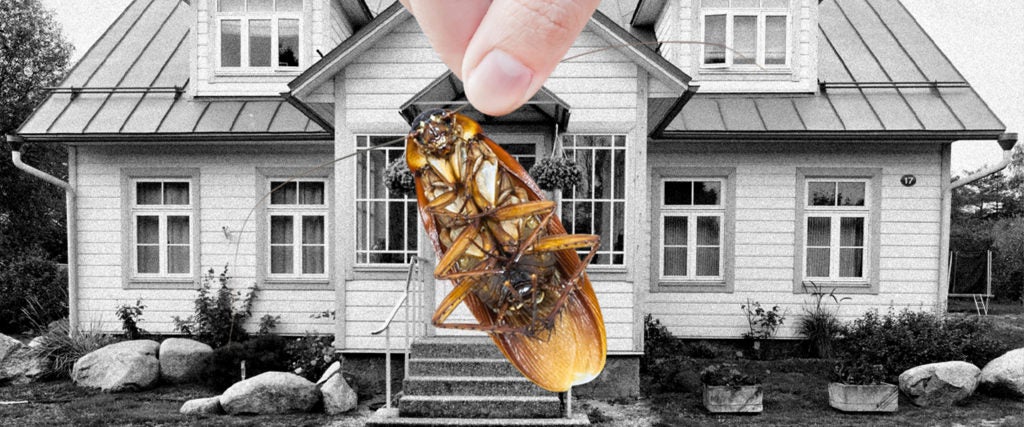For all the complaining about how much time we’re all spending indoors, you have to admit, it comes with some advantages. For one, it’s not like you’re going to get caught in the rain any time soon. For another, considering wrinkles and other skin afflictions are, in large part, caused by too much sun and not enough sunscreen, your epidermis is probably thanking you right about now.
But let’s not forget about the other major advantage: Safety from the bugs.
At least, that’s the idea. Being inside should mean keeping nature at bay on the other side of your doors and windows. Unfortunately, that’s not always the case. Insects have a knack for making their way into our homes and apartments whether we like it or not — why do you think we (extremely allegedly) swallow eight spiders a year? — and for most people with entomophobia, that just won’t do.
Fortunately in this hot-ass summer of quasi-quarantine, there are steps you can take to ensure you don’t make a meal out of any arachnids — or any other insects for that matter.
Watch the Cracks, Jack
If you have doors, and you have windows, you’ve got potential ingress and egress points for tiny critters. “You might think your doors and windows are closed, but a lot of times with older houses, there’s little gaps where pests can enter,” explains Ricky Salazar, an exterminator in L.A. Salazar suggests checking the weather stripping around any outside-facing doors, and the screens and caulking that protect your windows. “Also, spray your door and window screens with an insect repellent,” Salazar says. “That should prevent small bugs from landing on the screen, let alone crawling through its small holes.”
A Bridge to Nowhere
Bushes and mulch around the sides of your house may look nice, but they’re basically a bug superhighway. “We call these things ‘bridges,’” explains Salazar, “because pests live in them and on them. And if they’re touching your home, that makes getting inside your place that much easier.” To prevent these bridges from forming, the best thing you can do is make sure your bushes are trimmed back properly, and if you can avoid placing them too close, do so. Also, consider swapping out any surface like mulch or wood chips that make a nice home for bugs with ones like stone or cement that are a bit less hospitable.
Water, Water Everywhere
Like the poor schmo stuck dying of thirst in the desert when they see an oasis on the horizon — the “oasis” in this case being any standing water or dampness in or around your home — pests will make an immediate beeline for all that sweet, sweet H20. “Silverfish, i.e. those small, silver, elongated cockroach-looking insects, love making their home where it’s damp,” says Salazar. “You need to deny them their home, which means fixing any and all leaks, and running a dehumidifier if you live where it’s really humid.” Standing water brings mosquitoes, among other nasty critters, so dry up any of that, too.
Ooh, Ooh That Smell
Some pests deserve what’s coming to them — looking at you, mosquitoes — and some, like spiders, you just want to live elsewhere. In that case, Salazar suggests a tried-and-true home remedy, peppermint oil. “Use a dropper or dab with a moist cotton ball around your doors, windows and any other access point into your home. Spiders, ants, even mice hate the smell.”
When All Else Fails, Go to the Source
Everything mentioned above can and will help limit the amount of pests that make it into your home. But if you really want to take care of the problem, consider eliminating their food source: Any loose food. “Sweep, vacuum and generally clean around the house and especially around the kitchen and pantry areas as much as you can,” suggests Salazar. “Clean your drains, too — roaches and flies love to make drains their home. If you can eliminate room and board for the prey pests, the predator pests, like spiders, are likely to look for greener pastures, too.”
Remember, it’s your home: Everyone — and everything — else is just visiting.

